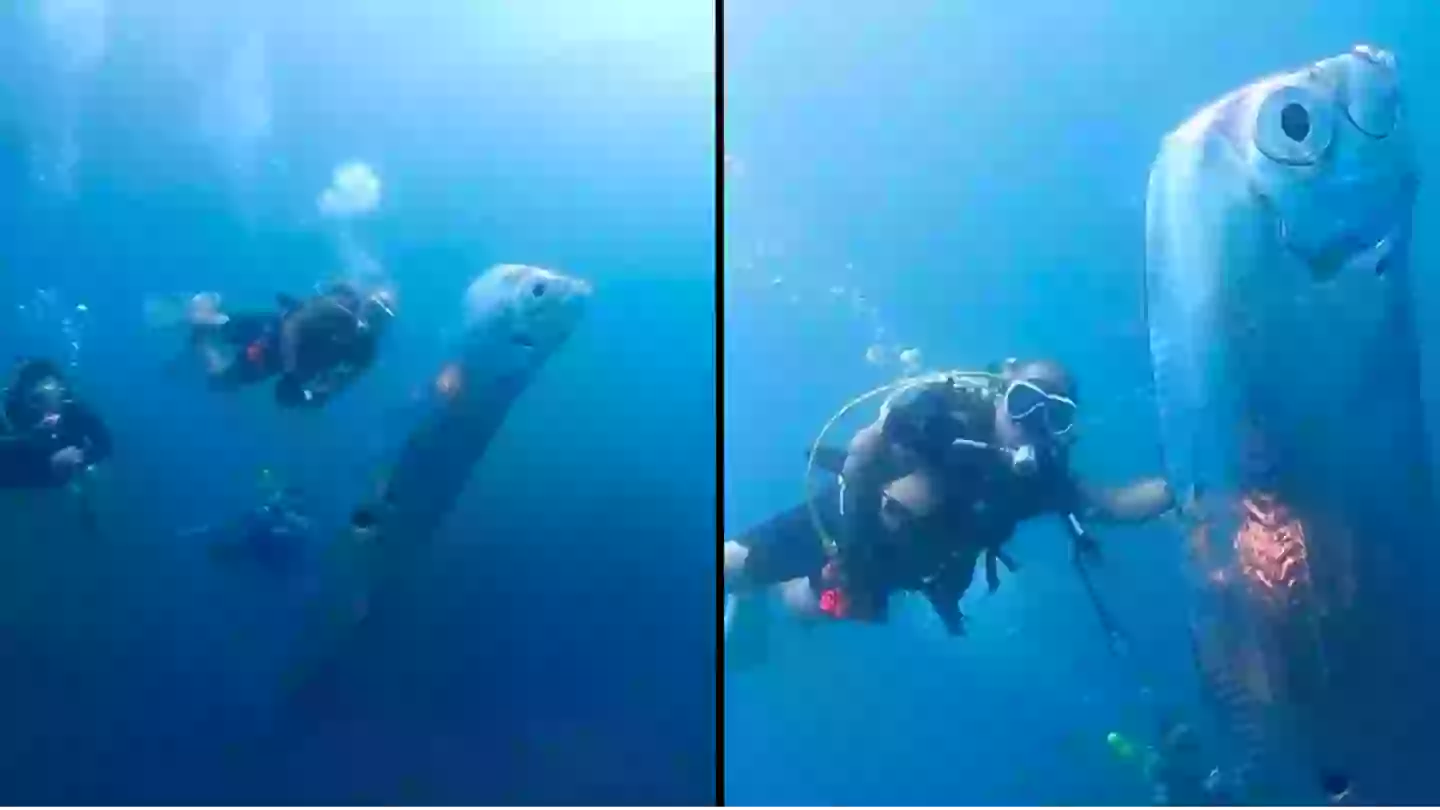
Divers have come across a terrifying-looking 6ft sea creature rising from the depths.
The creature is around two metres long, with an elongated and flattened body and highly silvered sides, like a huge knife.
And pictures shows the divers swimming alongside it close to the surface off the coast of Taiwan.
Advert
While this bizarre animal looks like something you might find in a Medieval bestiary, it is very real indeed.
Not only that, but their appearance has been associated with the stuff of legends, believed to be a harbinger of coming doom or danger, especially in Japanese mythology where they are believed to be an omen for tsunamis and earthquakes.

The creature, however, is actually called a Russell's Oarfish, and typically lives at much greater depths between 200m and 1000m.
Because the light is the same colour as the surroundings, this can make the huge creature almost invisible from the side in the gloom of the twilight zone.
Advert
Diving instructor, Wang Cheng-Ru, said it was the first time he'd ever seen a Russell's Oarfish, so had to grab a picture of it.
However, you may have noticed that the skin on this Russell's Oarfish appears to be pockmarked by big black holes sticking out, which looks like something has torn chunks from the enormous fish.
And it turns out that is exactly what has happened.
But what kind of monstrous animal would try to take on the fearsome-looking oarfish in the depths of the ocean?

Advert
While there are enormous sharks in the deep ocean, including the Six Gill Shark and the Sleeper Shark, these species tend to be more scavengers than active predators as hunting uses a lot of energy.
In fact, it's believed that the shark which created these horrific scars on the oarfish is actually a much smaller species, more commonly known as the Cookiecutter Shark.
The innocuous-looking little shark, whose name comes from its circular-shaped jaws, actually has a very nasty way of getting its food.
Once it has a hold, it nibbles away at the skin until it manages to tear a circular chunk from its victim, leaving the distinctive circular marks.
And the sharks and fish that it targets are hapless to do anything about it. They have no arms, so it's not like they can just scrape it off.
Advert
Wang believes that the oarfish was 'dying' so it was swimming to shallow waters.
But while the two metre specimen is still large, as oarfish go, it's a bit of a tiddler.
Oarfish have been confirmed to grow up to eight metres long, with unconfirmed sightings even suggesting they can reach more than twice that length.
One was even found off the coast of Chile spanning 16ft in length.
Topics: Animals, World News
